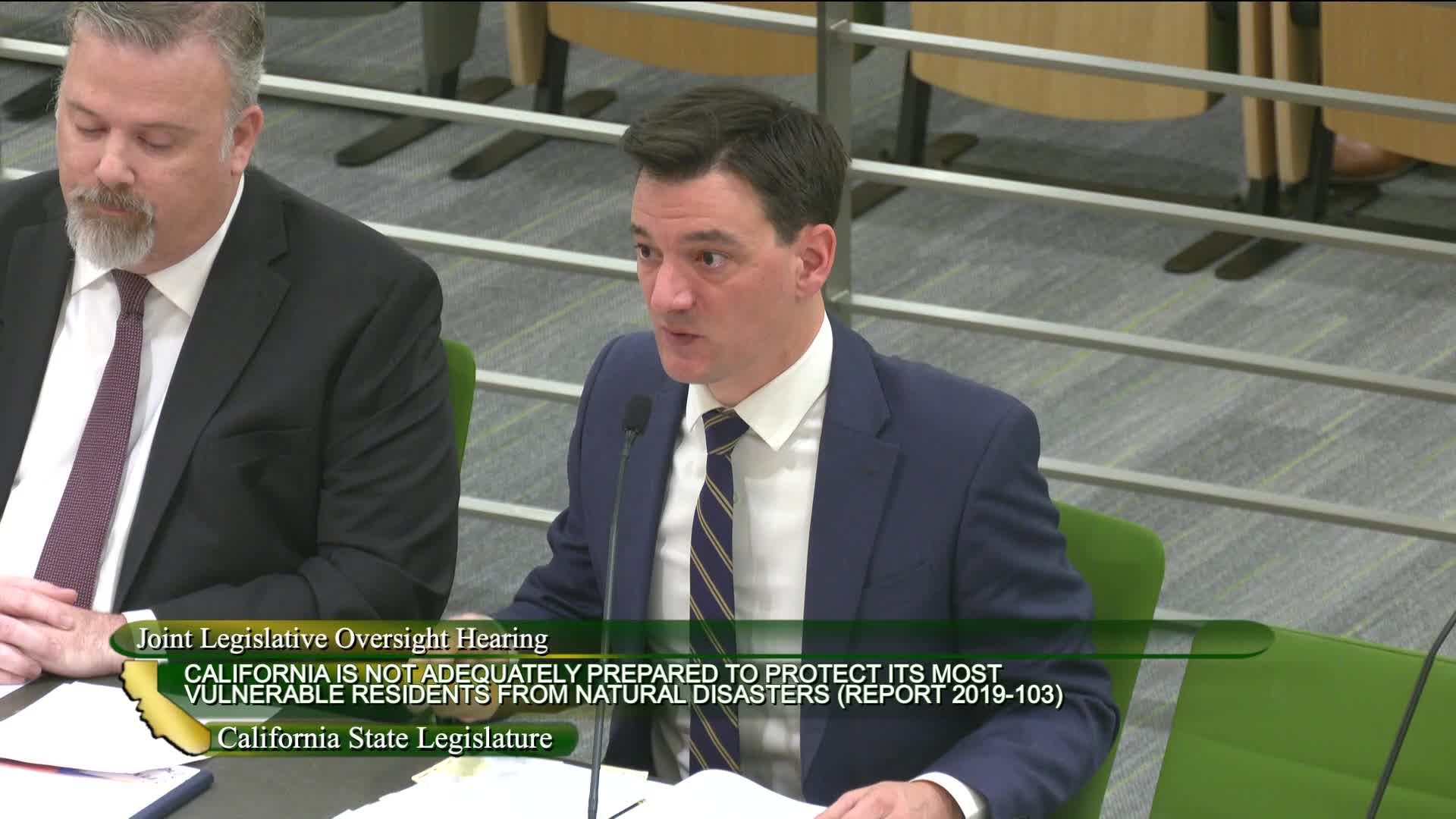California legislators address emergency notification failures after Eaton Fire audit findings
March 05, 2025 | California State Senate, Senate, Legislative, California
This article was created by AI summarizing key points discussed. AI makes mistakes, so for full details and context, please refer to the video of the full meeting. Please report any errors so we can fix them. Report an error »

In a pivotal meeting held on March 5, 2025, California's Joint Legislative Audit Committee and the Joint Legislative Committee on Emergency Management convened to address pressing concerns regarding emergency preparedness and response, particularly for vulnerable populations. The atmosphere was charged with urgency as lawmakers scrutinized the effectiveness of legislative measures following a 2019 audit that revealed significant deficiencies in the state's emergency management practices.
Assemblymember Ransom highlighted a troubling trend: the disproportionate impact of recent fires on individuals from the Access and Functional Needs (AFN) community, including the elderly and those with disabilities. He pointed out that many residents in Altadena received emergency notifications hours after the Eden Fire had already begun, raising serious questions about the adequacy of current emergency alert systems. "We have to think about real-world effectiveness," he urged, emphasizing the need for improvements to ensure the safety of those most at risk.
The discussion turned to the role of the California Office of Emergency Services (Cal OES) in reviewing local emergency plans. Lawmakers expressed frustration over the lack of compliance with state laws designed to protect vulnerable populations. Despite legislative efforts, many counties still failed to meet the required standards for emergency notifications, putting lives at risk. "No amount of planning guarantees success during a disaster," noted one auditor, stressing that inadequate planning could lead to tragic outcomes.
As the meeting progressed, the focus shifted to accountability. Lawmakers questioned whether the state had taken sufficient action against local governments for noncompliance. The absence of any legal repercussions for counties failing to adhere to emergency preparedness laws raised eyebrows. "Have we seen any litigation against counties for not complying with state law?" one member asked, highlighting a perceived disparity in enforcement compared to other areas of governance.
Cal OES representatives, including Deputy Director Laurie Najura and Chief Vance Taylor, defended their efforts to enhance emergency planning and response capabilities for AFN communities since the audit. They outlined various initiatives aimed at improving compliance and ensuring that local governments are better equipped to handle emergencies.
As the meeting concluded, the overarching sentiment was clear: while progress has been made, much work remains to be done. Lawmakers left with a renewed commitment to hold agencies accountable and to ensure that the lessons learned from past disasters translate into effective action that protects all Californians, especially those most vulnerable in times of crisis. The call for transparency and accountability echoed through the chamber, signaling a pivotal moment in California's approach to emergency management.
Assemblymember Ransom highlighted a troubling trend: the disproportionate impact of recent fires on individuals from the Access and Functional Needs (AFN) community, including the elderly and those with disabilities. He pointed out that many residents in Altadena received emergency notifications hours after the Eden Fire had already begun, raising serious questions about the adequacy of current emergency alert systems. "We have to think about real-world effectiveness," he urged, emphasizing the need for improvements to ensure the safety of those most at risk.
The discussion turned to the role of the California Office of Emergency Services (Cal OES) in reviewing local emergency plans. Lawmakers expressed frustration over the lack of compliance with state laws designed to protect vulnerable populations. Despite legislative efforts, many counties still failed to meet the required standards for emergency notifications, putting lives at risk. "No amount of planning guarantees success during a disaster," noted one auditor, stressing that inadequate planning could lead to tragic outcomes.
As the meeting progressed, the focus shifted to accountability. Lawmakers questioned whether the state had taken sufficient action against local governments for noncompliance. The absence of any legal repercussions for counties failing to adhere to emergency preparedness laws raised eyebrows. "Have we seen any litigation against counties for not complying with state law?" one member asked, highlighting a perceived disparity in enforcement compared to other areas of governance.
Cal OES representatives, including Deputy Director Laurie Najura and Chief Vance Taylor, defended their efforts to enhance emergency planning and response capabilities for AFN communities since the audit. They outlined various initiatives aimed at improving compliance and ensuring that local governments are better equipped to handle emergencies.
As the meeting concluded, the overarching sentiment was clear: while progress has been made, much work remains to be done. Lawmakers left with a renewed commitment to hold agencies accountable and to ensure that the lessons learned from past disasters translate into effective action that protects all Californians, especially those most vulnerable in times of crisis. The call for transparency and accountability echoed through the chamber, signaling a pivotal moment in California's approach to emergency management.
View full meeting
This article is based on a recent meeting—watch the full video and explore the complete transcript for deeper insights into the discussion.
View full meeting
